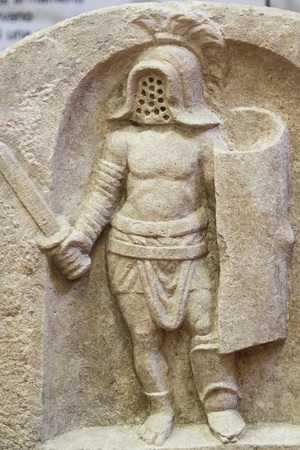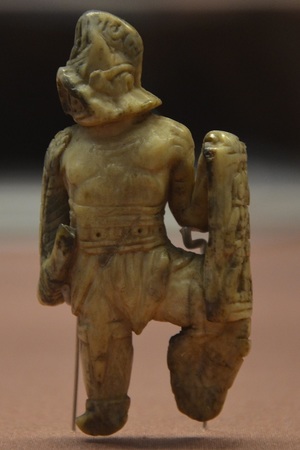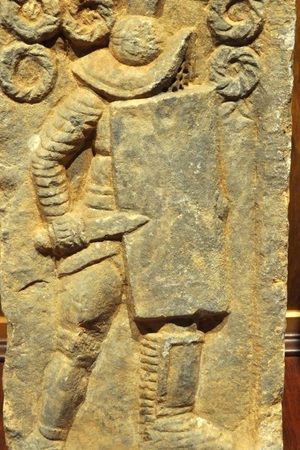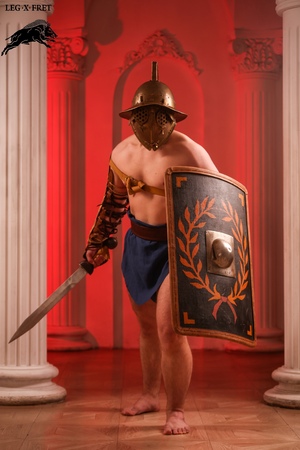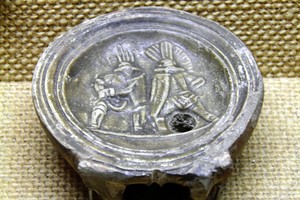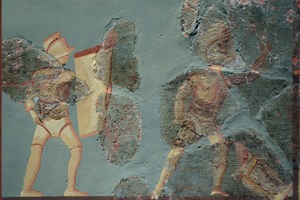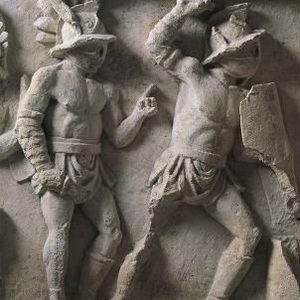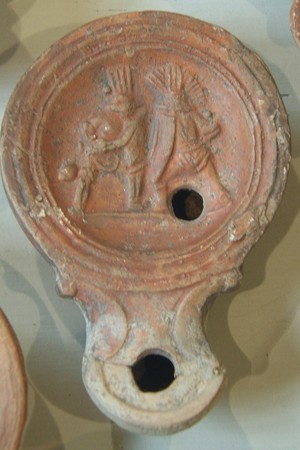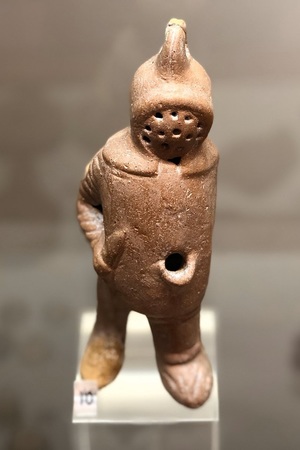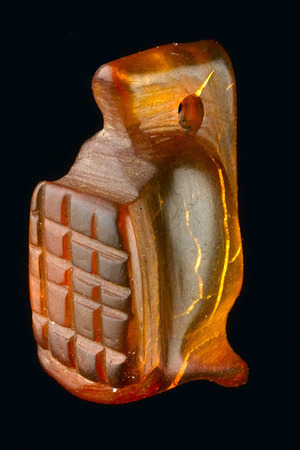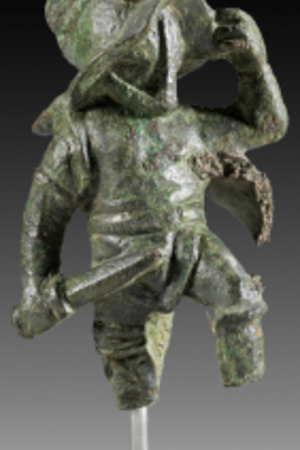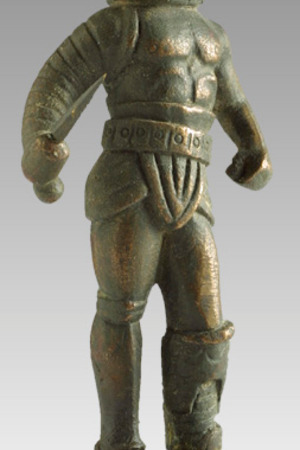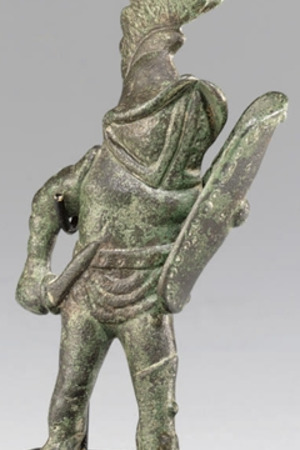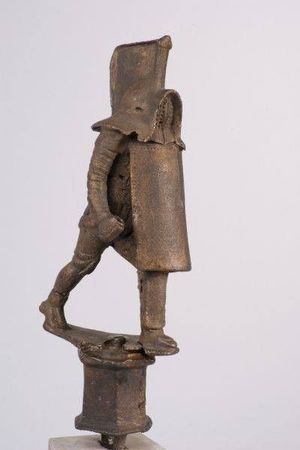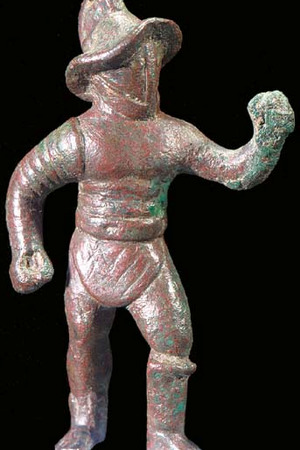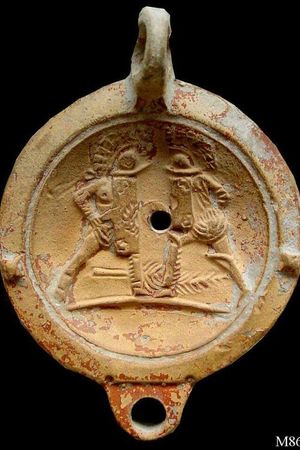Murmillon
The Murmillo (Latin: murmillo, myrmillo, mirmillo, mormillo from "murma" - "sea fish caught in a net") was a gladiator in Ancient Rome armed with a sword and a shield.
He belonged to the category of heavily armed gladiators and was equipped with a gladius (40-50 cm in length) and a slightly smaller version of the scutum. Murmillos wore a type III gladiator helmet with a wide protective visor and a crest. Sometimes the crest and the sides of the helmet were decorated with feathers. The Murmillo also wore a manica on his right arm, greaves, and, like other gladiators, he wore a subligaculum and a balteus. The weight of the equipment was around 12-18 kg. Murmillos were often referred to as Gauls, and their equipment was called Gallic, as this type of gladiator historically consisted of captured fighters from Gaul.
The main opponents of the Murmillo were the Thracians and the Retiarii, as evidenced by numerous visual and written sources. They sometimes also fought against hoplomachus and provocators.
Emperor Domitian (81-96 AD) was a fervent fan of Murmillo gladiators. This incredible passion was once expressed in a bloody revenge against one of the spectators who favored the Thracians. Suetonius describes this incident:
"[Domitian] ordered a man of the highest rank who had said that the Thracian gladiator would not yield to his opponent but would yield to the director of the games, to be brought out into the arena and thrown to the dogs, with the inscription 'Shield-bearer—for his impudent tongue.'"
Murmillon Equipment:
During a reconstruction of a fight on a rigid, non-sandy arena, the use of authentic footwear, such as caligae, is permitted.
Related topics
Gladiator, Helmet, Manica, Ocrea, Balteus, Subligaculum, Gladius, Pugio, Retiarius, Thraex, Hoplomachus, Provocateur
Literature
- Marcus Aurelius is alone. Reflections. - Kiev-Cherkassy: Artium Ing. Ltd., 1993. - 1 p. – (I, 5) – - 40000 copies – - ISBN 5-7707-51-12-6
- Gaius Suetonius Tranquipl. / Translated by M. L. Gasparov// Suetonius. The Life of Twelve Caesars, Moscow, 1988.
- Goroncharovsky V. A. Arena and Blood: Roman Gladiators between Life and Death, St. Petersburg, 2009.
- Goroncharovsky V. A. Spartak's War: the Risen slaves against the Roman Legions. St. Petersburg: Peterburgskoe Vostokovedenie Publ., 2011, 176 p. (in Russian)
- Brabich V., Pletneva G. Spectacles of Ancient Rome. L., 1971.
- Paolucci F. Gladiators: destined for death. Translated from Italian M., 2007.

 Gallery
Gallery






